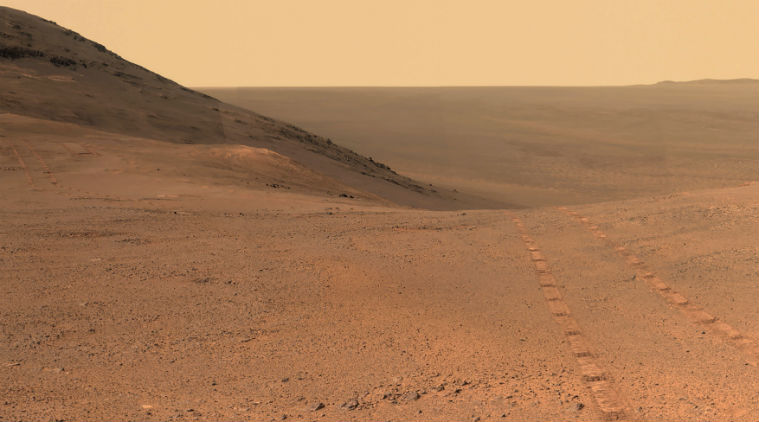
By Kenneth Chang
In more than 14 years of roaming Mars, NASA’s Opportunity rover took more than 210,000 pictures. (Its twin, Spirit, snapped an additional 125,000 on the other side of the planet.) Some were sweeping 360-degree panoramas of the reddish landscape. Others were microscopic close-ups of rocks. Through the images, mission scientists were able to decipher some of the geological history of Mars.
“Spirit and Opportunity were robotic field geologists,” said Steven W. Squyres, principal investigator for the mission, during a NASA news conference Wednesday. “A geologist is like a detective at the scene of a crime. Something happened at this place on Mars billions of years ago. What was it? What was it like there back then? And you’re looking for clues, and the clues are in the rocks.”
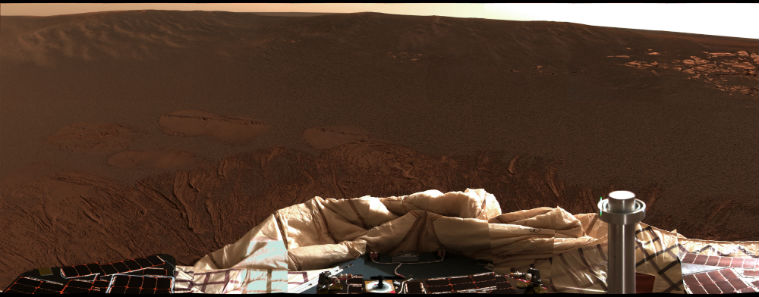
Sticking the Landing
Opportunity was sent to Meridiani Planum, a plain just south of the Martian equator.
When the first images popped up on the monitors, the scientists were flabbergasted. Opportunity, cocooned in a sphere of protective air bags, had by pure chance, rolled into one of the few craters in Meridiani Planum — an interplanetary hole-in-one.
Along the sides of the crater were exposed bedrock, all ready for the scientists to examine as they worked to produce a natural history of how this corner of Mars had formed. At first, the rocks were nicknamed the “Great Wall,” but that turned out to be a trick of perspective. The crater was tiny — only about 70 feet wide — and the exposed bedrock was about the height of a sidewalk curb. People quickly stopped calling it the Great Wall.
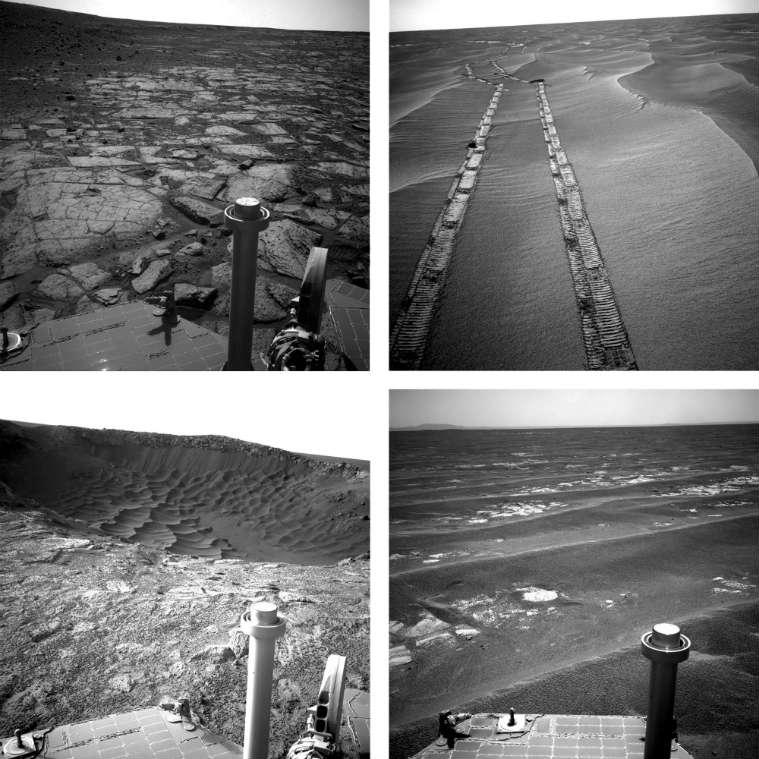
Blueberries Everywhere
Meridiani Planum was selected for two primary reasons. For engineers, a flat place is a safer, easier place to land. For the scientists, the Mars Odyssey orbiter had detected an intriguing signature of an iron oxide mineral known as gray hematite, spread out over a region the size of Oklahoma. On Earth, hematite typically forms in the presence of liquid water. (It is also possible for hematite to come out of lava without water.)
“The orbital data told us it was going to be there,” said Raymond E. Arvidson, deputy principal investigator. “It didn’t tell us where.”
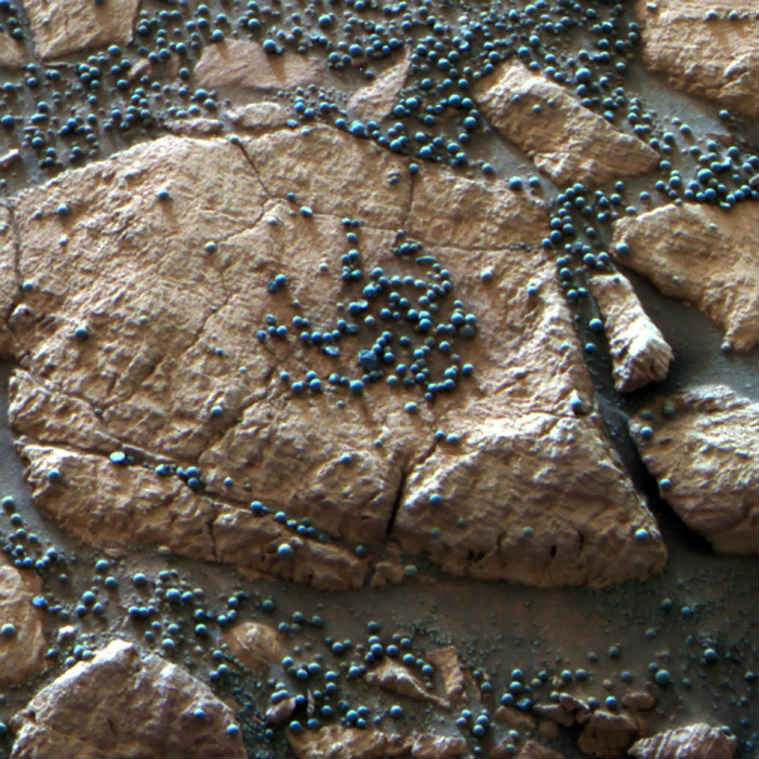
On the surface, Opportunity found a multitude of BB-size spheres, which the scientists called blueberries, and the blueberries were made of hematite, which formed as acidic water flowed through the sediments.
“Sort of the way an oyster forms a pearl,” Squyres said.
As the surrounding rock weathered, the blueberries, which were harder, rolled onto the surface.
Greater Craters
As it became apparent that Opportunity would last much longer than the 90 days they had originally expected, scientists moved onto bigger craters with larger swaths of exposed bedrock.
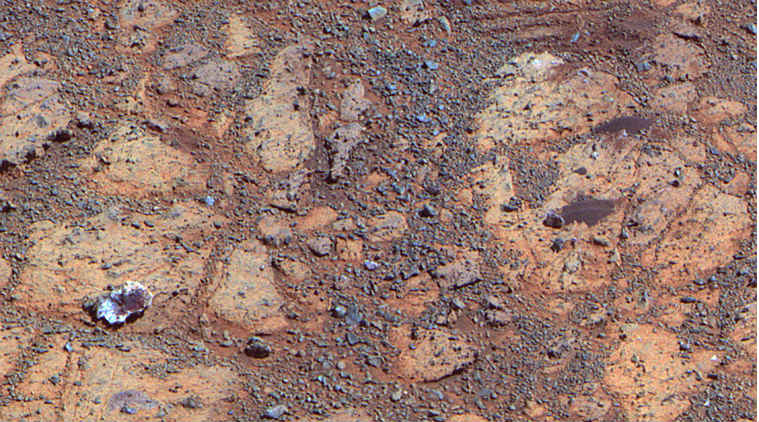
While the years of exploration added detail to the story of how Meridiani Planum formed, “we got most of the story in the first six weeks,” Squyres said. After they finished up at Victoria Crater, a half-mile-wide feature, they wondered what to do next.
A Three-Year Road Trip
Squyres said they could have continued exploring Meridiani Planum, but the rocks would have largely told the same story. Instead, the mission team decided to drive to a much larger, 14 mile-wide crater named Endeavour, which appeared to consist of older rocks.
The drive took three years, arriving in 2012. The rover had to take a roundabout route to avoid rippled areas where soft sands could have swallowed the rover. (In 2005, Opportunity got stuck in one of these ripples for several weeks. It escaped by backing out very slowly and carefully.)
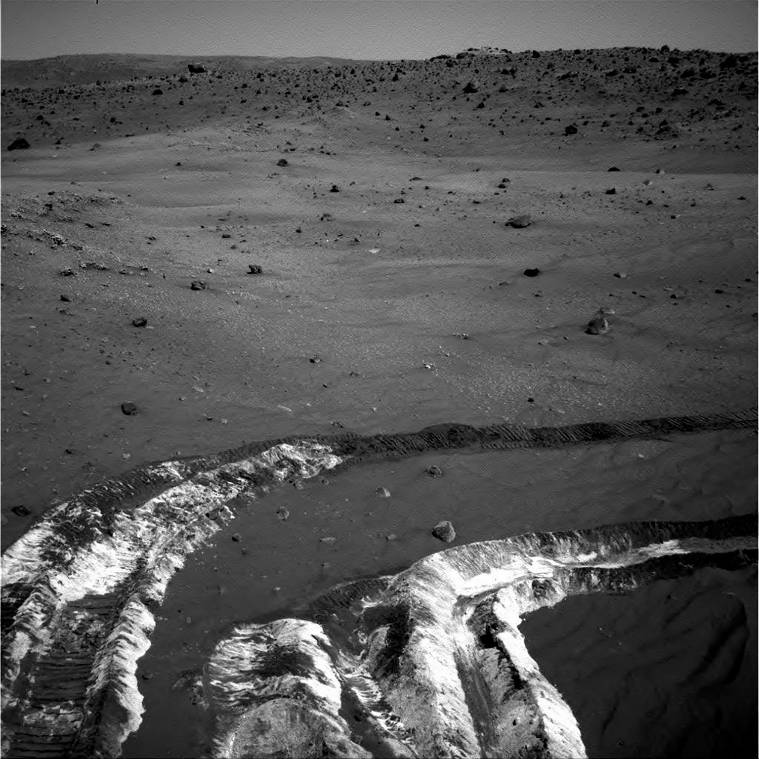
At Endeavour, the rover did find different rocks. “Everything changed, immediately,” Squyres said.
At a site named Matijevic Hill, in honor of Jacob Matijevic, a rover engineer who died in 2012, the scientists found rocks older than the crater that had been pushed upward. These rocks contained clays, which would have formed in pH-neutral water and indicated an environment that could have been habitable for life.
A Jelly Doughnut?
In one of the more whimsical puzzles encountered during Opportunity’s mission, Mars watchers were perplexed in January 2014 by an object that looked like a jelly doughnut. Strangely, that rock, about 1.5 inches wide, had not been there when Opportunity had photographed the same spot less than two weeks earlier.
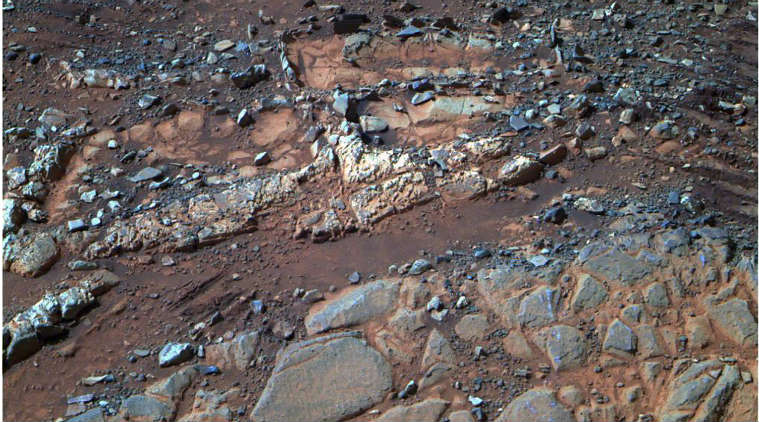
A subsequent photograph showed an overturned rock with a similar dark red center and white surface about a yard away. The jelly doughnut piece had broken and rolled downhill when the rover drove over it.
The dark inside was manganese oxide, which is rare on Mars, while the bright material consisted of sulfates.
Opportunity’s Last Stop
Before it was silenced by last summer’s dust storm, Opportunity was making its way down Endeavour Crater’s Perseverance Valley, which from orbit looked like a gully that was carved by water flowing into the crater. But close up, the picture looked very different. Patterns in the rocks indicated that the erosion occurred from wind blowing up and out of the crater, not water flowing down.
“That wasn’t even on our list” of initial hypotheses, Squyres said. “From orbit, you would swear this had to have been carved by liquid water.”
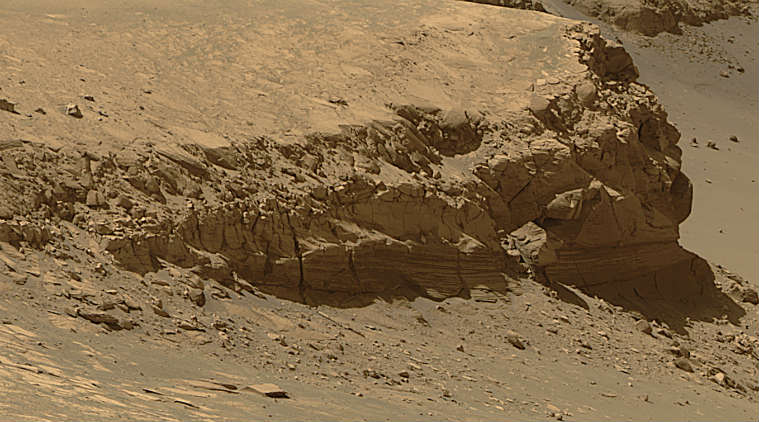
Squyres was not yet completely convinced: Wind and water erosion might have both occurred. If water had played a role, sediments would have piled up at the bottom of the gully.
But with the rover now dead, the answer eludes the mission’s scientists.
On the Other Side of the Planet
The Spirit rover set down inside Gusev Crater, about 100 miles wide. The initial findings were disappointingly dull. Everywhere the rover looked, it was basalt — volcanic rock. But about 1.5 miles away, there seemed to be hills that were more interesting.
“We sprinted, rover speed, as fast as we could,” Squyres recalled.
On day 156 of what was supposed to be a 90-day mission, “everything changed,” Squyres said. Instead of plain volcanic rocks, Spirit was examining areas that had once been hot springs and maybe geysers, where lava flowed into ice, setting off a multitude of chemical reactions.
“Early Mars at that location was a violent, hot steamy place,” he said.
The Spirit and Opportunity rovers initially were to cost $665 million. Because of cost overruns, the price rose to $800 million by the time the spacecraft were launched. In the end, with an extra 14 years of science, NASA spent $1.2 billion. For an additional $400 million, the rovers explored for 1,511 Martian days instead of 90.
“Talk about a return on investment,” Arvidson said.